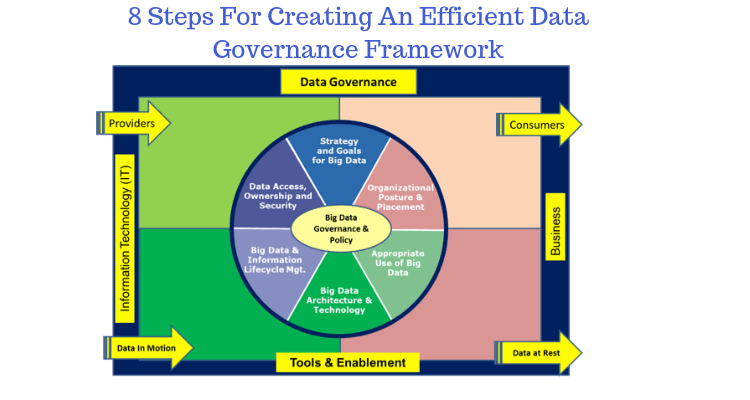Businesses are becoming increasingly aware of the need to have high-quality data for enabling accurate decision-making. They know that it is essential to have a data governance framework to monitor the information management program. The data governance approach needs to be customized according to the structure and working culture of an organization. It is essential that extensive planning goes into the establishment of the governance structure. This will be helpful in creating a framework with minimum scope for errors and maximum efficiency. Let’s take a look at the essential steps that are needed to create a governance structure at an enterprise.

1. Select The Perfect Model For The Governance Team
There are various models for creating the governance team and companies must assess which one will be the best for them. A basic model uses the three-level approach with subject matter experts in business and information technology (IT) sectors being positioned in the lowest level. They are followed by executives in the middle tier and the senior executives or the decision-makers form the topmost level.
2. Choose An Appropriate Governance Hierarchy
The organization must identify a suitable hierarchy for the governance program. Usually, companies give corporate governance precedence over all other governance initiatives. In order to establish a data-driven culture at the enterprise, data governance must be given top priority with other programs coming under its ambit. It is for the company to decide what type of governance initiative it wants to focus on for improving its performance.
3. Identify The Members Who Will Drive The Initiative
A data governance strategy cannot succeed without the support of top-level executives of the organization. Get all the key decision-makers and stakeholders from business departments like sales, marketing, finance etc. to become a part of the group that will drive the initiative. The senior personnel from IT sections must also be included in this team.
4. Create A Dedicated Office For The Program
The company must set up a dedicated data governance office which will run the whole program. Right from creating appropriate policies and procedures for information management and ensuring that they are followed, the office will be responsible for every aspect of the program.
5. Choose Data Owners And Stewards
The most important elements of a data governance framework are data owners and stewards. Owners are responsible for creating policies and maintaining data quality. Data stewards are entrusted with the enforcement of the policies. They also have the duty of resolving any issues related to the quality of information assets.
6. Create Policies And Procedures
The next is to create suitable policies for handling data elements. These policies will ensure information assets are treated in a consistent manner by everyone in the enterprise. All the procedures must be documented and provided to all users. The policies are related to all aspects of data like classification, nomenclature, security etc. One of the main objectives of creating policies is to ensure the maintenance of data quality.
7. Identify Data Owners From Business Sections
Data ownership roles are usually assigned to personnel belonging to the business sections of the enterprise. These people know how information is being accessed by the organization and how it be used for the decision-making process. Identify suitable staff members from the various business departments for the purpose
8. Select IT Personnel And Tools
IT plays an important role not only in the application of data management services but also in governance. People from the IT department must be selected for devising the data storage and transformation system. They will also help identify the suitable software tools for the purpose.
Conclusion
An efficient data governance framework lays the foundation for the management of information assets. The initiative helps in maintaining data quality and ensuring that high-quality information is available to all users in an organization.